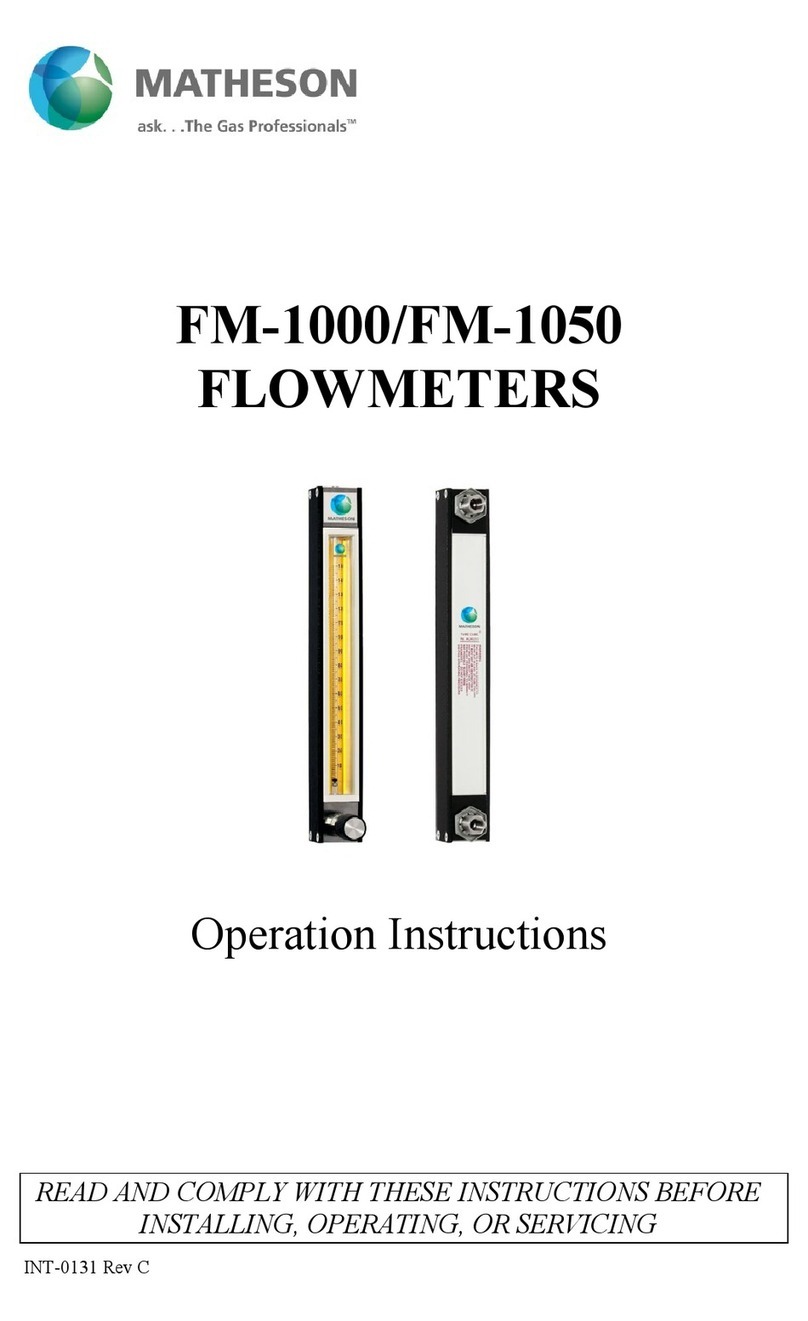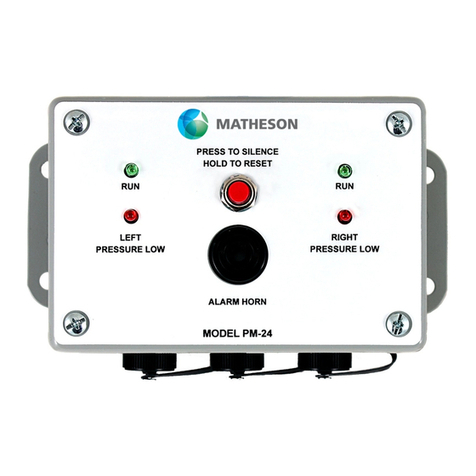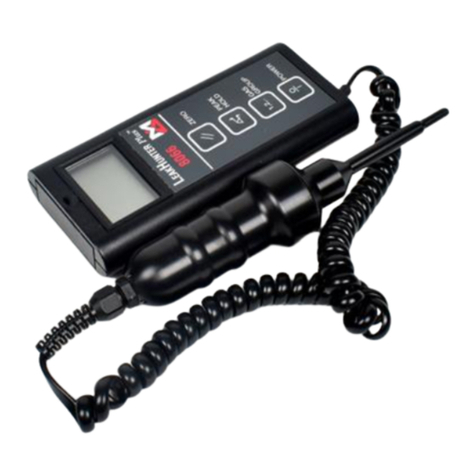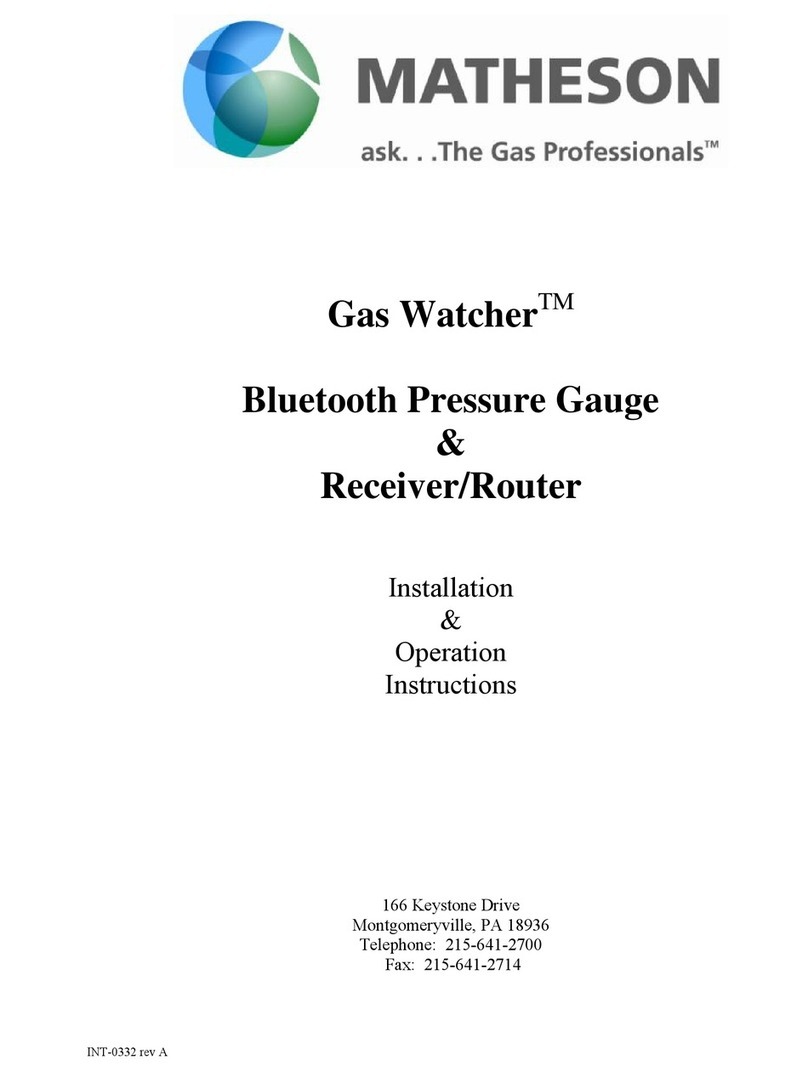
8067 MANUAL Matheson Tri-Gas
Page 3 of 1
MINT-0313-XX
Contents
Declaration of conformity ............................................................................................................................... 2
Statements ....................................................................................................................................................... 4
Safety ............................................................................................................................................................. 4
Quality Assurance .......................................................................................................................................... 4
Responsibility of use ...................................................................................................................................... 4
Disposal ......................................................................................................................................................... 4
Calibration Facility .......................................................................................................................................... 4
Legal Notice ................................................................................................................................................... 4
Instrument description .................................................................................................................................... 5
Packing List ......................................................................................................................................................
How 80 7 works ............................................................................................................................................... 7
Thermal Conductivity ..................................................................................................................................... 7
Instrument main menu .................................................................................................................................... 8
Functions ........................................................................................................................................................ 10
Contrast
................................................................................................................................................ 10
Backlight
................................................................................................................................................ 10
Sound
................................................................................................................................................ 10
Peak hold
................................................................................................................................................ 10
Calibration
........................................................................................................................................... 10
Battery selection
...................................................................................................................................... 11
View Data
........................................................................................................................................... 11
Units
.................................................................................................................................................... 11
Display
.................................................................................................................................................... 11
Gas selection
......................................................................................................................................... 1
The Keypad .................................................................................................................................................. 13
Using The 80 7 .............................................................................................................................................. 14
Probe options ................................................................................................................................................. 15
Detecting Leaks ............................................................................................................................................. 1
Calibration ...................................................................................................................................................... 17
Over view ..................................................................................................................................................... 16
Selecting Factory or Custom Calibration ..................................................................................................... 17
Calibration procedure using 'ppm' units ....................................................................................................... 17
Calibration procedure using 'cc/sec' units .................................................................................................... 18
Instrument warranty and service ................................................................................................................. 19
Replacing batteries ........................................................................................................................................ 19
Instrument Specifications ............................................................................................................................. 20
Replacing parts .............................................................................................................................................. 21
































